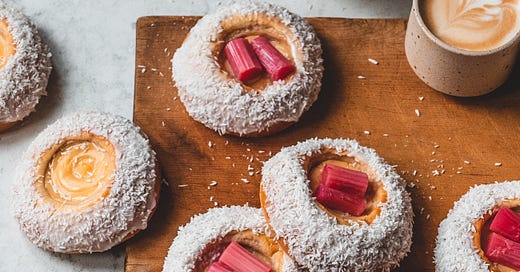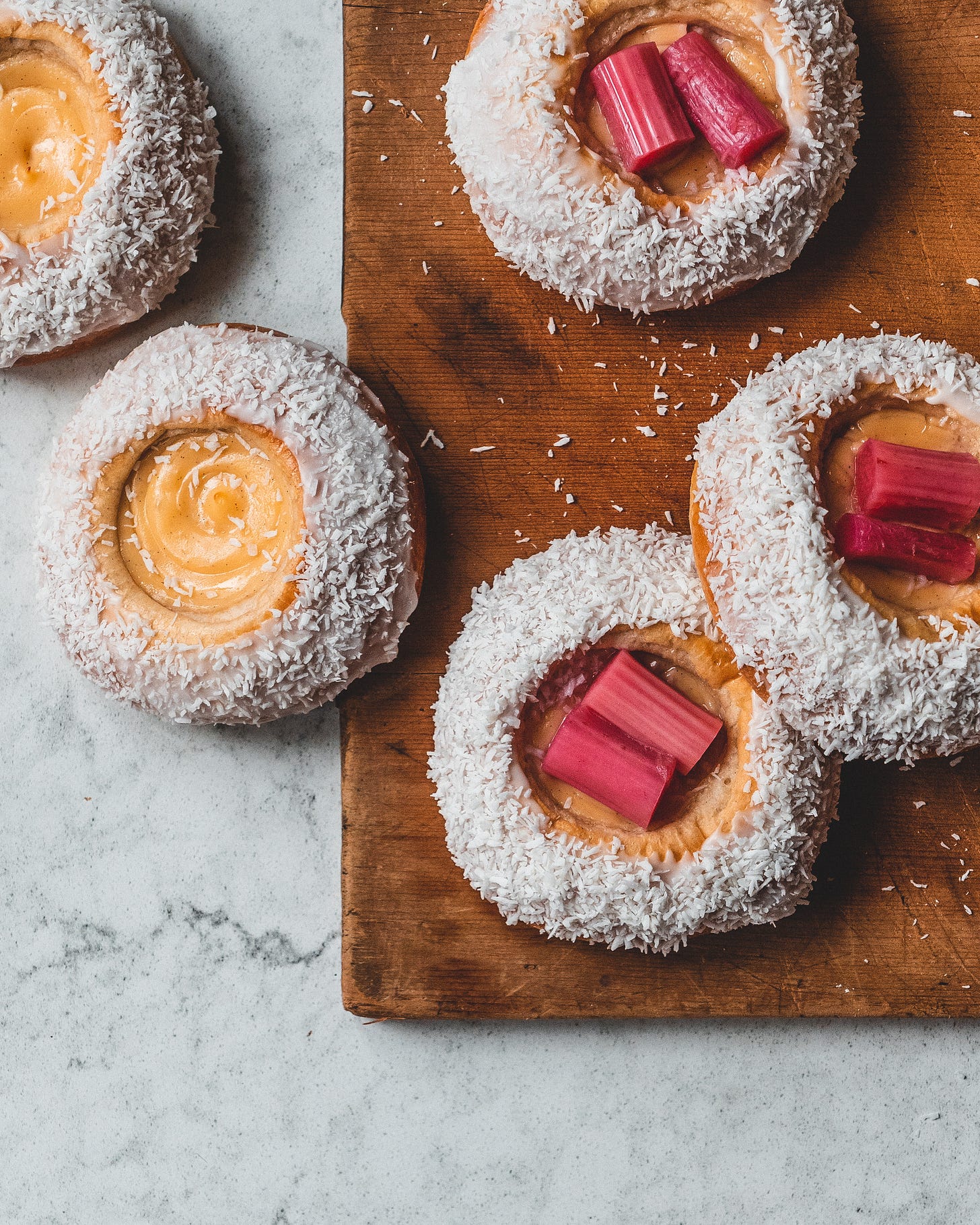This week, we are taking a culinary trip to Norway, to make a batch of skoleboller, which means school buns, or skolebrod which means school bread. These buns are incredibly popular in Norway, gaining their initial popularity back in the 1950s. The name comes from the fact that they became a popular choice for school lunchboxes, which is far better than a packet of crisps and a kitkat if you ask me. The buns are relatively simple and straightforward, made with a brioche style dough infused with cardamom and filled with a vanilla custard. The baked buns are then most commonly coated with a simple icing sugar glaze and then coated with shredded coconut.
My version, which is not traditional but a recipe inspired by those Norwegian buns, is made with a butter rich brioche and instead of just the classic custard filling I add a dollop of homemade rhubarb jam. Once baked I also like to add a couple pieces of poached rhubarb to finish the whole thing off nicely.
Brioche
When making brioche there is some basic bread knowledge we need to brush up on, namely how fat can interrupt gluten development. Brioche, like most breads, relies on good gluten development for its structure. Gluten development starts when flour is hydrated by water but when fat is added it coats the flour (and the proteins in the flour responsible for gluten development), creating a barrier between the flour and water, which slows down gluten development. This is the reason most brioche recipes add the butter later on in the mixing process. By first kneading the dough without the butter and building up good dough strength, the butter can be added without the dough losing strength. This is especially important in recipes that have a high proportion of butter, as in this recipe.
Kneading brioche takes a long time, longer than you’d imagine and this brings with it another challenge. When the butter is added we want it to emulsify and blend into the dough without melting. For this reason, you want to use butter that is pliable, if you press it with your finger it should easily leave an imprint in the butter but not feel greasy. If the butter warms up too much and melts the finished dough will be greasy and the texture of the baked brioche will be more cake-like than bread-like. This is another reason adding the butter after the dough has become strong and well developed helps ensure you end up with a beautiful brioche dough, the longer the butter is mixer the warmer it becomes.
Pastry Cream
The pastry cream filling in these buns is a pretty classic custard. Pastry cream differs from other types of custard in that it uses both eggs and starch as a thickener. When you make a creme anglaise, for example, the egg content and the proteins they contain thicken the custard to give it body, leaving you with a relatively thin pourable mixture. The addition of starch, in most cases cornflour, adds a much stronger thickening power resulting in a custard that is significantly thicker. When the starch is heated and mixed with liquid it gelatinises and hold onto water which results in a thickened mixture. Starch is much more efficient at this process compared with the proteins in eggs, but the texture of a custard thickened with only starch will be less creamy than one made with eggs so the use of the two (and the addition of butter) creates a very thick custard with a rich and creamy texture.
Keep reading with a 7-day free trial
Subscribe to The Boy Who Bakes to keep reading this post and get 7 days of free access to the full post archives.





